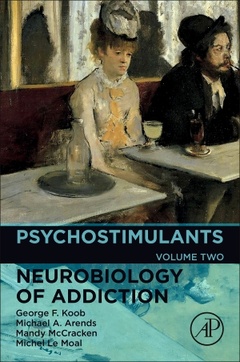Description
Psychostimulants
Neurobiology of Addiction Series
Authors: Koob George F., Arends Michael A., McCracken Mandy L, Le Moal Michel
Language: English
Subjects for Psychostimulants:
122.46 €
In Print (Delivery period: 14 days).
Add to cart262 p. · 19x23.3 cm · Paperback
Description
/li>Contents
/li>Readership
/li>Biography
/li>Comment
/li>
A current survey and synthesis of the most important findings in our understanding of the neurobiological mechanisms of addiction are detailed in our Neurobiology of Addiction series, each volume addressing a specific area of addiction. Psychostimulants, Volume 2 in the series, explores the molecular and cellular systems in the brain responsible for psychostimulant addiction, including both direct/indirect sympathomimetics and nonsympathomimetics. This volume introduces the readers to the history of psychostimulant use. The authors clearly differentiate the neurobiological effects into three distinct stages of the addiction cycle: binge/intoxication, withdrawal/negative affect, and preoccupation/anticipation.
1. Definitions2. History of psychostimulant use 3. Physiological effects4. Behavioral effects 5. Pharmacokinetics6. Behavioral mechanism of action 7. Medical use, abuse, and addiction 8. Neurobiological effects 9. Summary
Michael A. Arends received his Bachelor of Science degree from the University of California, San Diego. He is currently a Senior Research Assistant in the Committee on the Neurobiology of Addictive Disorders at The Scripps Research Institute and has worked in the field of the neurobiology of drug addiction for 20 years. He is Managing Editor for the journals Pharmacology Biochemistry and Behavior and Journal of Addiction Med
- Highlights recent advances in psychostimulant addiction
- Includes neurocircuitry, cellular and molecular neurobiological mechanisms of psychostimulant addiction
- Defines the abuse and addiction potentials of both direct and indirect sympathomimetics and nonsympathomimetics
These books may interest you

AlcoholNeurobiology of Addiction 122.46 €



